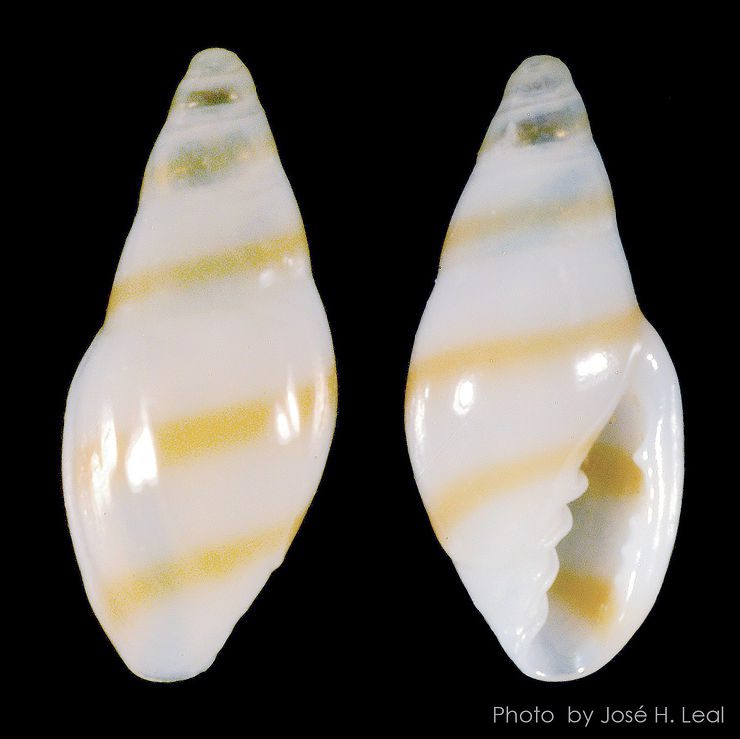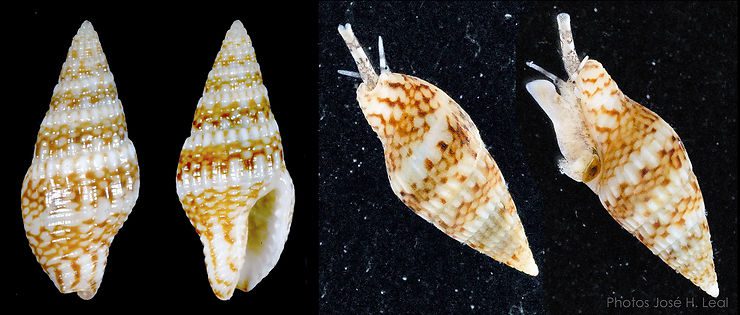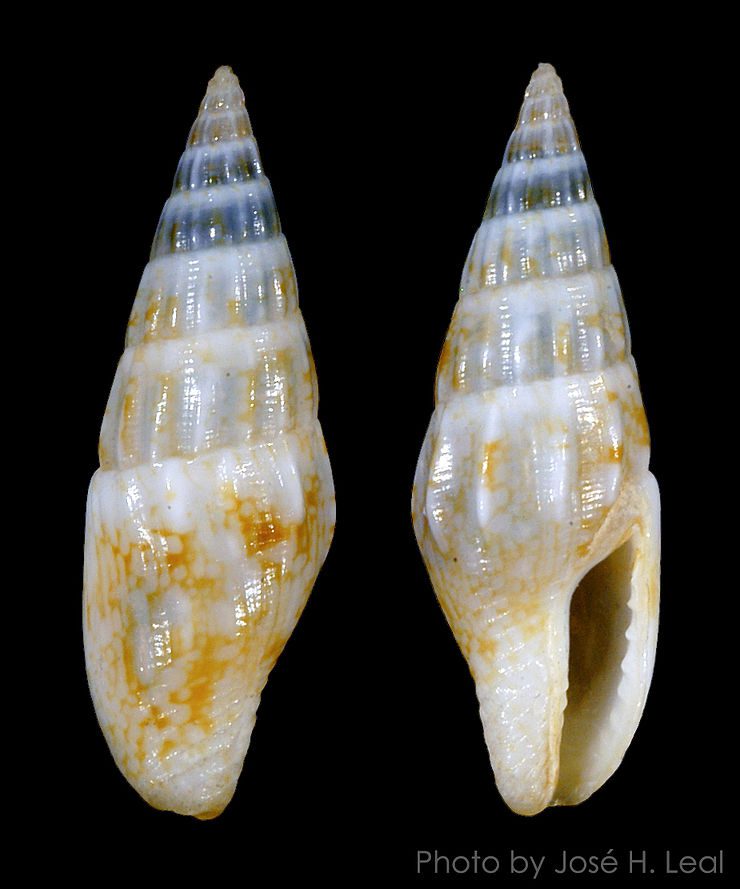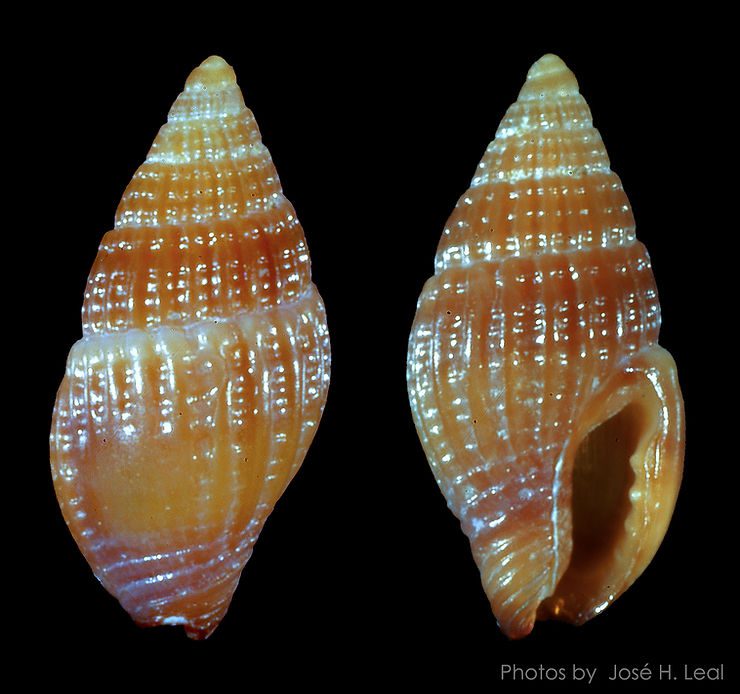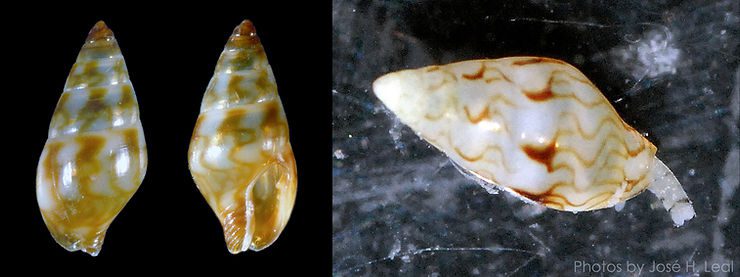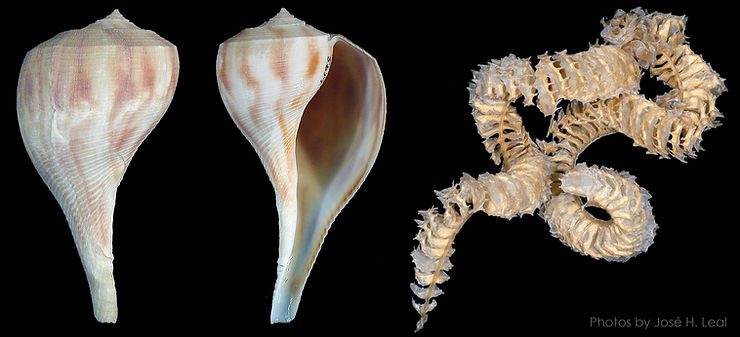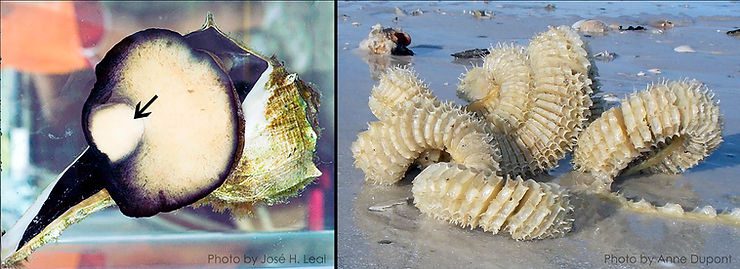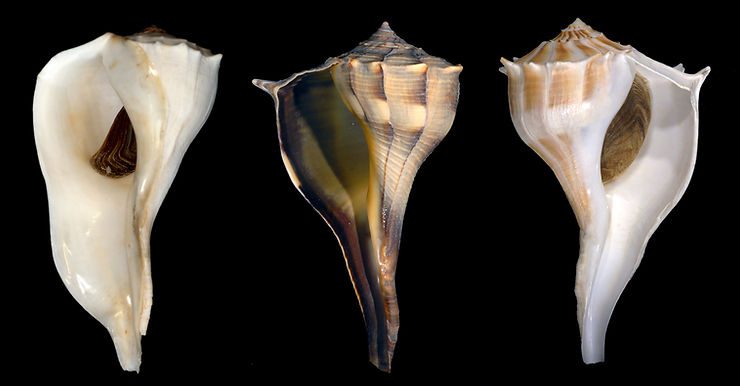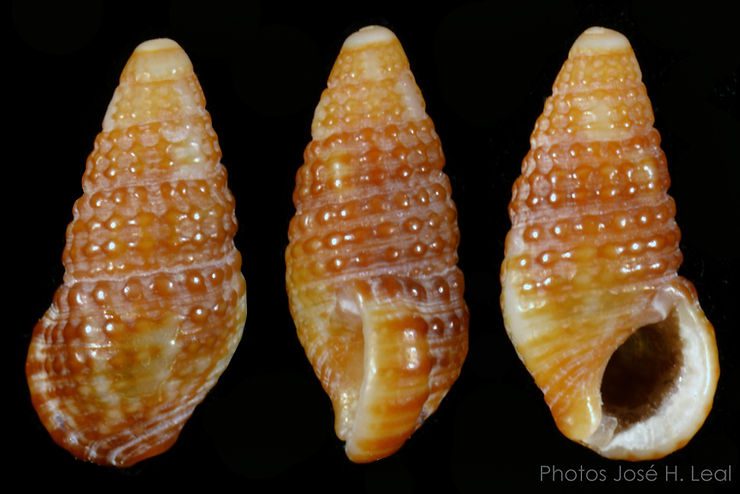
The Variable Cerith
The Variable Cerith, Cerithium lutosum Menke, 1828, is most likely the rarest of the local shallow-water ceriths (family Cerithiidae). At 13 mm (about 0.5 inch), it may also be the smallest local member of the family. The shell is adorned with a nodulose sculpture, with an oval aperture with poorly defined anterior and posterior canals. The color is very variable, usually brown, dark-brown, blackish, or mottled with white flecks. The aperture white inside. The shell illustrated is one of two fou
